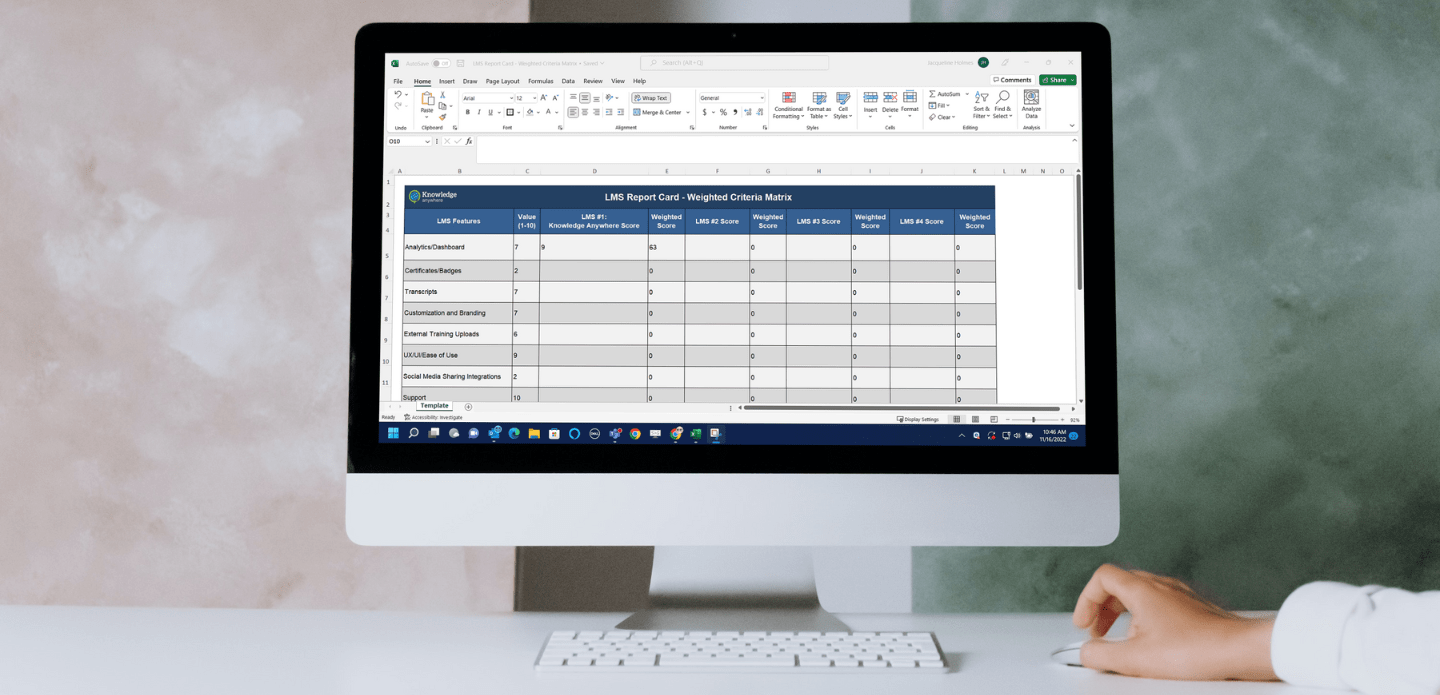While remote work is a wonderful and inevitable development that allows you to train a global workforce from anywhere, it also features inherent challenges. The question many employers are asking now is "how can I tell if my remote workers are engaged and working if I can't see them?" The answer to solving this problem is microlearning.
What is Microlearning?
Microlearning is the practice of providing instruction in smaller, manageable portions as opposed to longer lessons. It's a format particularly well-suited for employees that telecommute. Let's take a closer look exactly why microlearning is the answer for training your remote teams.
1. Encouraging Self-Paced Learning
One of the most effective ways to engage remote workers and get insights into their productivity is through self-paced microlearning. But how exactly does this method work?
Self-paced learning gives individuals control over their learning journey. They can decide when, where, and how fast they want to learn. This flexibility is particularly beneficial for remote workers, who often juggle work commitments with the distractions and demands of a home environment.
Moreover, self-paced learning caters to different learning styles and speeds. Some people may grasp concepts quickly, while others might need more time to digest the information fully. By enabling self-paced learning, you're providing an inclusive learning environment that respects these differences, thereby enhancing learner engagement.
But how does self-paced microlearning reflect remote workers' productivity? The key lies in tracking learning progress and patterns.
While it may not directly reveal the number of tasks completed or hours worked, self-paced learning can offer valuable insights into an employee's productivity. For example, by monitoring progress in a microlearning course, you can identify who is actively engaging with the training content, at what pace they're progressing, and how well they're grasping the concepts.
If a remote worker consistently completes learning modules and scores well in assessments, it's a strong indicator of their discipline, dedication, and ability to work independently - all crucial traits of productive remote employees. In essence, self-paced microlearning not only fosters a more engaging learning experience but can also provide an indirect, yet reliable, measure of a remote worker's productivity.
2. Implementing QuickQuiz for Instant Knowledge Checks
As more businesses turn to remote work, keeping employees engaged and assessing their knowledge can be a challenge. This is where tools like QuickQuiz come into play. QuickQuiz is an innovative tool that lets you create and distribute short, engaging quizzes directly to your team members via popular platforms such as Slack.
But how can QuickQuiz help engage remote employees and monitor their work?
QuickQuiz does this by providing instant knowledge checks. You can send a short quiz after a microlearning session to assess how well your remote workers have absorbed the material. These quizzes not only reinforce learning but also create an interactive experience, which can boost engagement.
Monitoring work through QuickQuiz comes down to insights from these knowledge checks. By analyzing the quiz results, you can understand who has fully grasped the concepts and who may need additional support or resources. In essence, it provides a tangible measure of a remote worker's engagement and understanding of their work content.
Moreover, regular QuickQuiz checks can help identify knowledge gaps across your team, providing the opportunity for immediate intervention and support. In this way, QuickQuiz serves a dual function - it enhances remote worker engagement and provides a snapshot of the team's knowledge levels, acting as a gauge of their work progress.
Below are a few case studies of how you can use QuickQuiz. Try a free trial of the tool here!
- Test to see if your team was listening after meetings
- Remind people with a pop quiz
- Onboard new employees easily
3. Setting and Tracking Microlearning Goals
Setting SMART microlearning goals is another powerful strategy to determine if your remote workers are productive. These goals can be designed to align with the specific learning needs and pace of each worker, promoting a more personalized and effective learning experience.
Depending on the nature of the work and the learning content, these goals could be set on a daily, weekly, or monthly basis. For instance, a daily goal could involve completing a certain number of microlearning modules or achieving a specific score in a QuickQuiz. A monthly goal, on the other hand, might involve completing a larger course or project.
By tracking progress towards these goals, you can gain valuable insights into a remote worker's productivity and learning patterns. Are they consistently meeting their daily goals? Are they making steady progress towards weekly or monthly targets? This data can provide a tangible measure of an individual's engagement, discipline, and ultimately, their productivity.
Moreover, achieving these microlearning goals can boost a remote worker's motivation and confidence, further increasing their productivity. After all, meeting a goal - no matter how small - gives a sense of accomplishment and spurs the desire to continue learning and improving.
In essence, setting and tracking microlearning goals offer a dual benefit. It provides a structured, personalized learning pathway for remote workers and acts as an effective tool to monitor their productivity. Employees who are consistently meeting or even exceeding these learning goals are likely demonstrating high levels of productivity in their remote work environment.
4. Incorporating Gamification Elements
Gamification is a proven strategy to boost engagement and productivity. By incorporating elements such as points, badges, and leaderboards into your microlearning programs, you can turn learning into a fun and motivating experience for remote workers.
Points and badges can be awarded for completing learning modules, achieving high scores in quizzes, or meeting certain learning goals. Leaderboards add a social element to the learning experience, sparking friendly competition among remote workers. Levels or stages can be used to mark progress through more extensive courses or to indicate mastery of particular skills or topics.
By tracking these gamification elements, you gain another layer of insights into your remote workers' engagement and productivity. Who is earning the most points or badges? Who is leading on the leaderboard? Who has advanced through the levels the quickest?
Employees who frequently engage with these gamified elements are not just playing a game - they're actively engaging with the learning content and making progress. They're demonstrating their motivation to learn and improve, which is a strong indicator of high involvement and productivity in their work.
Moreover, gamification can boost morale and build a sense of community among your remote team, further enhancing their productivity. In essence, gamification isn't just a fun addition to your microlearning program - it's a powerful tool to engage remote workers and monitor their work progress.
Summary
The bottom line is that microlearning is a flexible, customizable training format that suits remote workers perfectly. When your team members are in disparate locations, they can process the information in your training courses - included as part of a personalized plan tailored to their needs - in shorter bursts that are less mentally draining and time-consuming than longer, traditional courses. Talk with a training expert today for a personalized look at your training program. Book a meeting with us here!
Similar Posts
Learn how you put education at the center of your organization with these great articles and resources.




